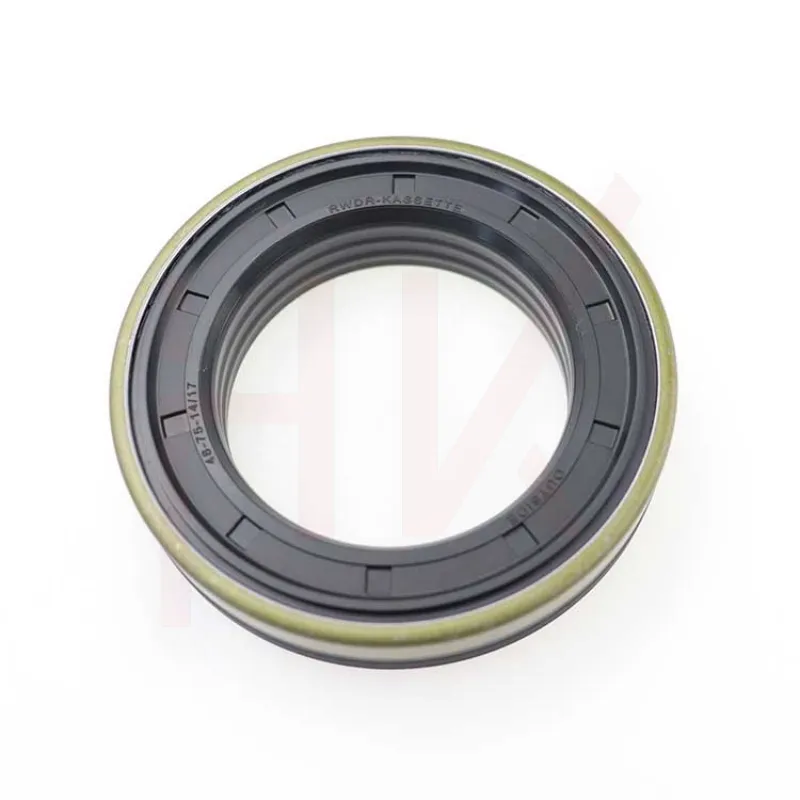Jul . 27, 2024 15:11 Back to list
Steps to Successfully Replace Hydraulic Seals for Optimal Equipment Performance and Longevity
Hydraulic Seal Replacement A Comprehensive Guide
Hydraulic seals are critical components in hydraulic systems, designed to prevent fluid leakage and maintain the system's efficiency and effectiveness. Over time, these seals may wear out or become damaged due to exposure to pressure, temperature changes, and the characteristics of the hydraulic fluid. When this happens, a hydraulic seal replacement becomes necessary to ensure the smooth operation of equipment such as excavators, forklifts, and various industrial machinery. This article provides a detailed overview of the hydraulic seal replacement process, its importance, and key considerations.
Understanding Hydraulic Seals
Hydraulic seals come in various types, including O-rings, rod seals, and piston seals, each serving a specific function. They are typically made from materials such as rubber, polyurethane, and plastics, which have excellent resistance to high pressure and temperature. The primary function of these seals is to block the escape of hydraulic fluid while allowing necessary movement within the machinery.
Why Replace Hydraulic Seals?
The need for hydraulic seal replacement arises from several factors
1. Wear and Tear Continuous operation can lead to abrasion and degradation of seal materials, resulting in leaks. 2. Chemical Exposure Some hydraulic fluids can cause chemical reactions that break down seal materials over time.
3. Operational Issues Excessive pressure or temperature can stress seals beyond their limits, leading to failure.
4. Improved Performance Upgrading to higher quality or more suitable seals can enhance the efficiency and lifespan of the hydraulic system.
Ignoring the signs of worn seals can lead to significant fluid loss, risking both the system’s performance and overall operational safety.
Signs That Seals Need Replacement
Before deciding to replace hydraulic seals, it is essential to recognize the indicators of wear
. Common signs include- Fluid Leaks Any visible leakage around the seals indicates a failure that requires prompt attention. - Decreased Performance A drop in hydraulic pressure or responsiveness can signal that seals are not functioning correctly.
hydraulic seal replacement

- Increased Noise Unusual sounds coming from hydraulic machinery may suggest issues with seals or other components.
The Replacement Process
Replacing hydraulic seals involves several critical steps
1. Preparation Begin by ensuring the hydraulic system is depressurized and disconnected from any power source. Safety is paramount during this stage.
2. Disassembly Carefully disassemble the components housing the seals. Take note of the assembly process, as you will need to reverse it later.
3. Seal Removal Remove the old seals from their positions. Be careful not to damage the housing or other components during this process.
4. Inspection Examine the housing and surrounding components for wear or damage. Any imperfections should be addressed before installing new seals.
5. Seal Installation Place new seals into their respective positions, ensuring correct orientation and alignment. Lubricate the seals lightly to facilitate easier installation.
6. Reassembly Reassemble the hydraulic components, carefully following the order and specifications noted during disassembly.
7. Testing Once everything is reassembled, conduct tests to ensure the integrity of the seals and the performance of the hydraulic system. Check for leaks and monitor pressure levels.
Conclusion
Hydraulic seal replacement is a vital maintenance task that ensures the efficiency and longevity of hydraulic systems. By recognizing the signs of seal failure and understanding the replacement process, operators can prevent significant operational disruptions and maintain equipment performance. Regular inspections and timely replacements will not only save costs in the long run but also enhance safety and reliability in hydraulic operations. Investing in high-quality seals and following proper maintenance protocols can lead to a more efficient hydraulic system, ultimately benefiting overall productivity.
-
TCN Oil Seal Metal Ring Reinforcement for Heavy Machinery
NewsJul.25,2025
-
Rotary Lip Seal Spring-Loaded Design for High-Speed Applications
NewsJul.25,2025
-
Hydraulic Cylinder Seals Polyurethane Material for High-Impact Jobs
NewsJul.25,2025
-
High Pressure Oil Seal Polyurethane Coating Wear Resistance
NewsJul.25,2025
-
Dust Proof Seal Double Lip Design for Construction Equipment
NewsJul.25,2025
-
Hub Seal Polyurethane Wear Resistance in Agricultural Vehicles
NewsJul.25,2025
-
The Trans-formative Journey of Wheel Hub Oil Seals
NewsJun.06,2025
Products categories
















